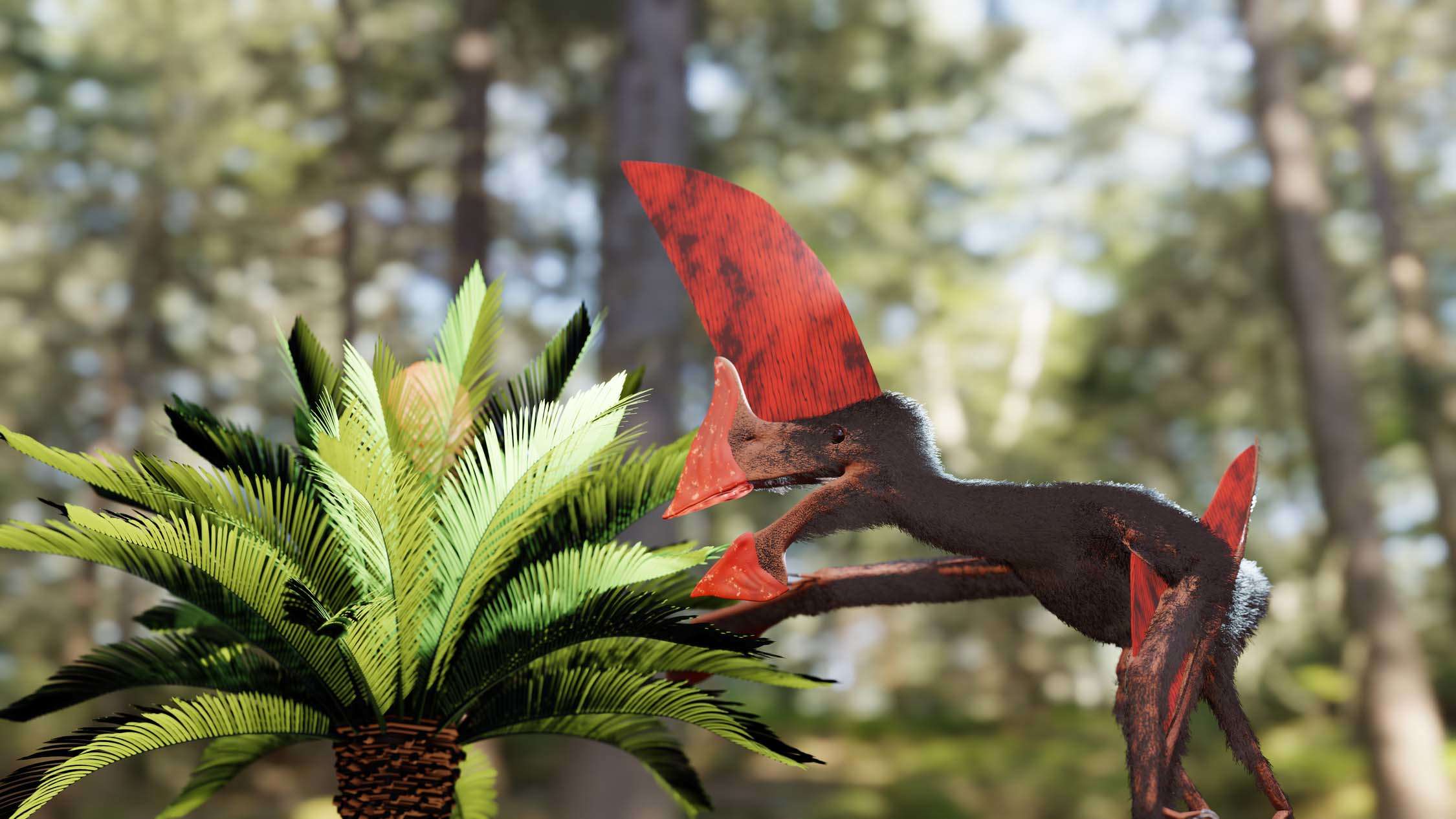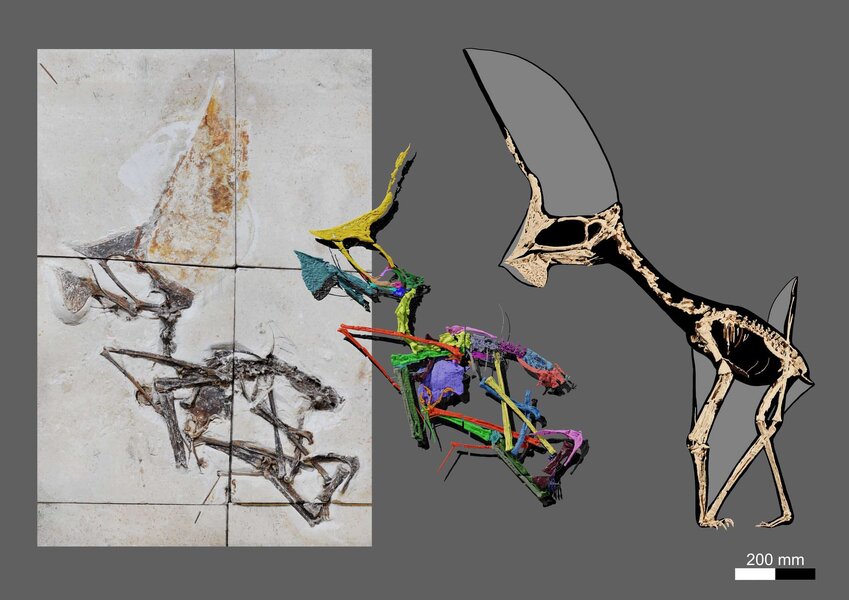Create a free profile to get unlimited access to exclusive videos, sweepstakes, and more!
More like a three-foot turkey, well-preserved pterosaur preferred ground foraging over flight

The Araripe Basin in northeastern Brazil is well-known for its fossil stores, but in 2013 it was the scene of a crime ripped straight out of an Indiana Jones movie. Barrels discovered during a police raid at the Santos Harbor concealed, among other things, six slabs of limestone containing the most complete specimen of Tupandactylus navigans — a species of pterosaur — ever discovered. A specimen of this caliber, of course, belongs in a museum and has since been turned over to the Laboratório de Paleontologia Sistemática of the Instituto de Geociências at Universidade de São Paulo for research. Findings were recently published in the journal Plos One.
“The Federal Police was already investigating the fossil traffic in Brazil at that time, and this operation was called 'Operação Munique' (Operation Munich). Most of the fossils are fishes, insects, occasionally plants and reptiles. Only two pterosaurs were recovered in this apprehension, and I've only managed to study the one we published in Plos One (the other is not as complete, but we plan on tackling it in the future),” Victor Beccari, lead author of the paper, tells SYFY WIRE.
Previously discovered specimens of this pterosaur consist of isolated skulls or partial skeletons, but this recent find is near-complete and well-articulated, offering scientists new insight into the animal’s anatomy and behavior. Once out of the barrels, the slabs were placed together like a tapestry and observed both visually and via X-ray CT scans, which revealed structures still covered by sediments.
“Now we have a clearer picture of the full skeleton of this animal, which was known before only by its head. Being able to look at the ecomorphology and start studying the biomechanics with the 3D data we've acquired is definitely my favorite part of this work,” Beccari says.
Hailing from the early Cretaceous period, Tupandactylus navigans belongs to a group of animals known as tapejaridae which span geographies all over the world, including Europe, Asia, and of course the Americas. The flighted reptiles were known for their large crests, the likes of which would make even your average cassowary (a living dinosaur if we’ve ever seen one) balk. The precise purpose of these crests is unknown, but may have been sexually dimorphous, playing a role in the mating process.
With regard to impressive crests, Tupa. navigans is no exception, bearing the largest dentary crest among tapejarine pterosaurs, accounting for roughly 40 percent of its overall height, the soft tissues of which are beautifully preserved in the Brazilian specimen. Most importantly, however, are the details uncovered from the rest of the skeleton.
Like modern birds, the bones of pterosaurs are hollow and fragile, which makes them less than ideal candidates for preservation. As such, complete specimens are notoriously rare, which makes this find especially exciting.
Among the results outlined by Beccari et al. is a new understanding of Tupandactylus navigans’ relationship with flight. We imagine pterosaurs as high-flying predators of the kind which might swoop down from the sky and attack a fleeing Jimmy Buffet, consuming him and his two frozen cocktails in a single gulp. In reality, Tupa. navigans might have spent most of its time foraging on the ground.
“Tupandactylus navigans had all the adaptations for a powered flight, such as large muscle anchorage areas in the first arm bone (the humerus) and the fusion of the first back (dorsal) vertebras into a structure we call notarium," Beccari says. "However, it has a disproportionately tall head crest that, with an elongated neck (which it had), would possibly hamper long distance flights. This animal was possibly using flight as an escape alternative for predators, or for short distances to look for food and mates.”
The body structures suggest that while flight was possible, it was energy-expensive and couldn’t be sustained over long periods. Additionally, comparison to related species and examination of jaw structures indicate a primary diet of hard vegetation.
Instead of the high-flying aggressive predator of Jurassic Park fame, Tupa. navigans was probably closer to a 3-foot-tall turkey with an eight-foot wingspan. While this incredible fossil specimen offered a lot of new data about the species, we might have learned even more.
“There's plenty we lose when a specimen is collected like this. Since we don't know the exact location, we cannot keep digging in the same place to look for other specimens that lived and died with Tupandactylus navigans," Beccari says. "We do know it comes from the Lower Cretaceous (around 115 million years ago) of the Crato Formation in the Chapada do Araripe, northeastern Brazil. But the exact location and layer are impossible to know. Therefore, even though we have lots of fossils from the same site, we cannot be 100% sure that all these organisms existed at the exact same time, as there can be even hundreds to thousands of years separating the layers there. That's one of the worst ways to collect fossils, without the presence of a professional paleontologist.”
The specimen is currently on display at the São Paulo's Geosciences Museum
















